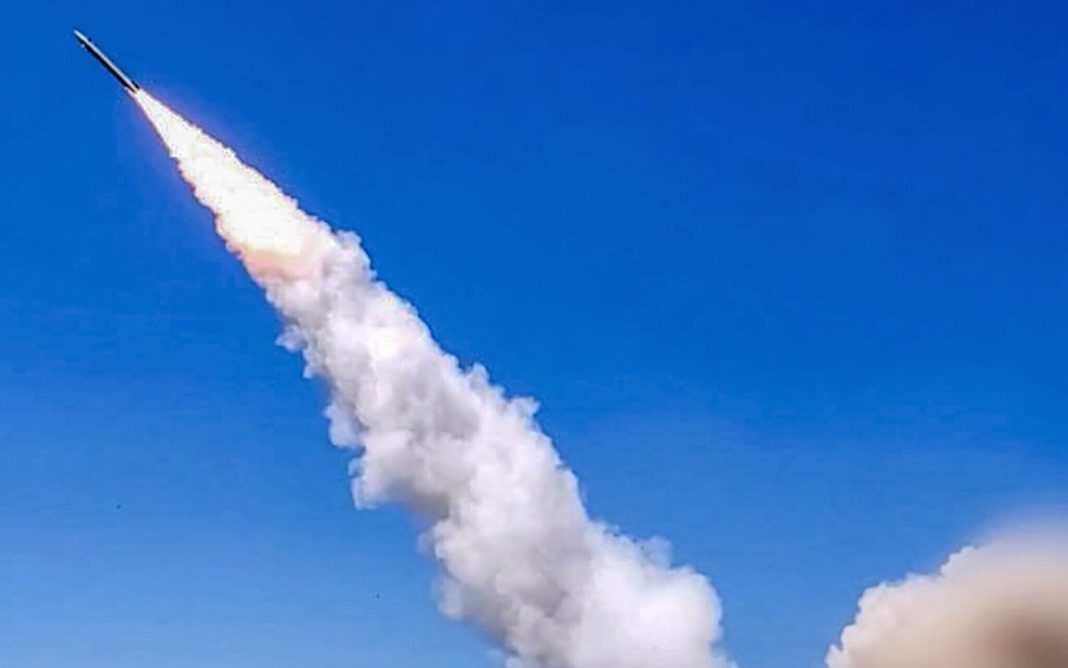The conflict in the Middle East has taken a new turn as Yemen’s Houthi movement confirmed that it has started producing missiles capable of carrying multiple warheads. This announcement marks a significant step in the group’s growing arsenal and has already raised alarm among its adversaries.
New Multiple Warheads Missile Capability Announced
The Houthi leader explained in a televised address that their missile forces had developed a new type of weapon called the Palestine 2 ballistic missile. Unlike traditional missiles that usually carry a single warhead, this upgraded version can now carry multiple warheads at once. According to the statement, this achievement was presented as a major breakthrough by their missile forces.
This new development means that a single missile launched by the Houthis can split into several warheads mid-flight, making it harder for missile defense systems to intercept. The announcement was delivered to supporters as part of a broader message of resistance against Israel.
Houthis vow more strikes after alleged hypersonic hit on Israel’s Ben Gurion international airport
Strikes Linked to Multiple Warheads Development
The claim about multiple warheads follows an incident on August 22, when the Houthis announced that they had launched a hypersonic ballistic missile toward Israel. Later assessments by the Israel Defense Forces concluded that the missile used was a multiple warhead missile — the first such deployment by the group.
This was not the first time the Houthis had carried out long-range missile strikes. Since the outbreak of the Gaza conflict in 2023, they declared that they would take military actions in support of Palestine. Their threats included not only strikes on Israeli targets but also a ban on vessels linked to Israel from passing through the Red Sea and the Bab el-Mandeb Strait.
Treasury Targets 3 Ships Funding Iran-Backed Houthis in Red Sea
The Houthis have repeatedly targeted civilian ships traveling through the Red Sea and the Gulf of Aden. These waters are some of the most important maritime trade routes in the world, connecting Asia, Africa, and Europe. Dozens of commercial ships have faced attacks, forcing shipping companies to take alternative routes. These actions disrupted trade and highlighted the strategic importance of the waterways.
In January of this year, attacks temporarily stopped after a ceasefire was introduced in the Gaza Strip. However, when the ceasefire collapsed in early March, the Houthis resumed their campaign. They began launching fresh strikes against Israeli-linked vessels in the Red Sea and attempted attacks on Israeli territory, including on Ben Gurion Airport, one of Israel’s main air travel hubs.
Claims of Homemade Arsenal
The Houthis consistently say that they develop their weapons locally and do not receive them from outside countries. In their public statements, they stress that they build their missile arsenal, including the new multiple warheads technology, at home. They repeat this claim often to present themselves as independent in their military activities.
Accusations have circulated internationally that the group receives outside help, particularly from regional powers. However, both the Houthis and those accused of backing them have strongly denied these claims. Official statements from those countries reject any involvement in supplying or supporting the Yemeni movement militarily.
Despite these denials, the ability to produce multiple warheads represents a major shift in the capabilities of the Houthis. Multiple warheads mean more potential damage from a single missile launch and make defense systems more difficult to use effectively. This adds to the tension already surrounding the conflict in the region.
🚢Shipping panic: Houthis vow attacks on all vessels tied to Israeli ports
The introduction of these missiles into the Houthi arsenal also follows a pattern of their military evolution. Over the years, they have advanced from using smaller weapons to more sophisticated systems. Their targets have also shifted from regional strikes to long-range missile launches that reach beyond Yemen’s borders.
With the Red Sea remaining a hotspot for naval and air activity, and with renewed strikes against Israeli-linked interests, the announcement of these new multiple warheads capabilities underscores the seriousness of the ongoing conflict.

